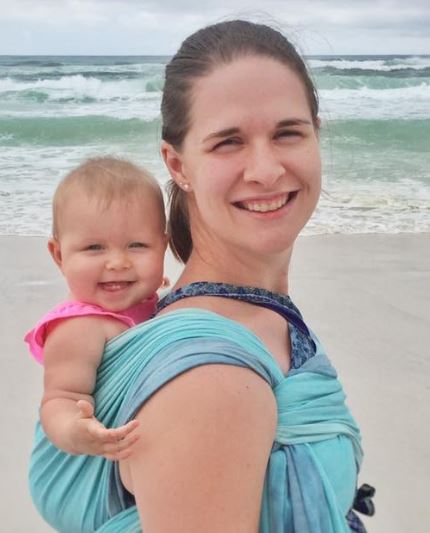Return to Main - DIY Babywearing on Facebook - TICKS Rules for Safe Babywearing - 4 Rules for Safe Fabric Selection
- TICKS Rules for Safe Babywearing - 4 Rules for Safe Fabric Selection
 Alyssa Leonard - 2016-07-16
Return to Main - DIY Babywearing on Facebook
Alyssa Leonard - 2016-07-16
Return to Main - DIY Babywearing on Facebook - TICKS Rules for Safe Babywearing - 4 Rules for Safe Fabric Selection
- TICKS Rules for Safe Babywearing - 4 Rules for Safe Fabric Selection
Different Types of Baby Carriers
Page Under Constuction; for now, download PDF: CarrierStyles.pdfCarrier Styles
- Woven Wrap
- Ring Sling
- Stretchy Wrap
- Pouch Sling
- Mei Tai
- Onbu (and variations)
- Soft Structured Carrier
- Podaegi
Woven Wrap
Also referred to as: wraps, wovensDescription
A long, narrow parallelogram of woven (not stretchy) fabric. Ends may be blunt (making it a long rectangle) or tapered. Used by wrapping around wearing and baby - dozens of different ways to wrap.Good For
- Front Carries: Good for all ages
- Hip Carries: Good for babies with strong truck control
- Back Carries: All ages (for experienced wrappers only)
- Forward Facing: Good for babies with decent truck control
Advantages
Incredibly versatile; good for all ages, no upper weight limit, no need to "upgrade" to bigger carrier for toddlers, all size wraps usable by nearly all size wearersDisadvantages
Steep learning curve, takes more time to get baby upVariations
- Handwoven: high quality, woven by hand. More "beauty marks," more expensive
- Machine woven: made to imitate a handwoven. Fewer "imperfections," more affordable
- Hybrid: stretches a little from rail to rail (no lengthwise stretch) giving it the snuggliness of a stretchy wrap but the versatility of a woven.
- DIY/"Simple Piece of Cloth" - A woven wrap made from bolt fabric such as osnaburg or cotton duck or repurposed fabric like a tablecloth.
Sizing
Available in a wide variety of sizes from a size 1 (2 meters long) up to a size 8 (5.6 meters long) or longers. All sizes are usable by nearly any size wearer or child. Wrap length determines what kind of carries can by done. Most beginners start with their "base size" (whatever size is needed to do a Front Wrap Cross Carry; usually a size 5, 6 or 7 for most women) and carries are categorized based on what size is needed in relation to your base size. (For example: a ruck tied in front requires a wrap two sizes smaller than your base size, so instead of being referred to as a "base 4" carry, it is referred to rather as a "base minus 2" carry.)Stretchy Wrap
Also referred to as: Stretchy, brand names Moby, Boba, or SollyDescription
A long, narrow parallelogram of stretchy fabric; usually similar to a jersey knit.Good For
- Front Carries: Good from newborn and up. Rated up to 35lbs, usually starts to get uncomfortable around 15lbs.
- Hip Carries: Good for babies with strong truck control. Rated up to 35lbs, usually starts to get uncomfortable around 15lbs.
- Back Carries: Never Safe; Do Not Attempt
- Forward Facing: Debatable; typically considered fine for babies with strong trunk control
Advantages
Poppable and can be pre-tied (tie it once and then pop baby in and out as needed for diaper changes or to nurse.) One-size-fits-most.Disadvantages
Tricky to learn how tight to pre-tie. Often only comfortable for the first few months of baby's life before baby is too heavy and it constantly sags.Variations
- "K'tan" loop-style: instead of one long, continuous strip wrapped around three different times, it is instead two loops and one sash that are all separate. Easier to put on, but must be carefully sized for the wearer.
Sizing
Regular stretchy wraps are nearly one-size-fits-all. Some companies like Moby do offer plus-sized lengths. K'tan-style loop carriers must be very carefully sized to the wearer as they have no way to adjust. --| I | Attachment | History | Action | Size | Date | Who | Comment |
|---|---|---|---|---|---|---|---|
| |
CarrierStyles.pdf | r1 | manage | 1836.2 K | 2016-07-16 - 14:08 | AlyssaLeonard | Different Types of Baby Carriers |
Topic revision: r4 - 2016-08-29 - AlyssaLeonard
Ideas, requests, problems regarding TWiki? Send feedback



